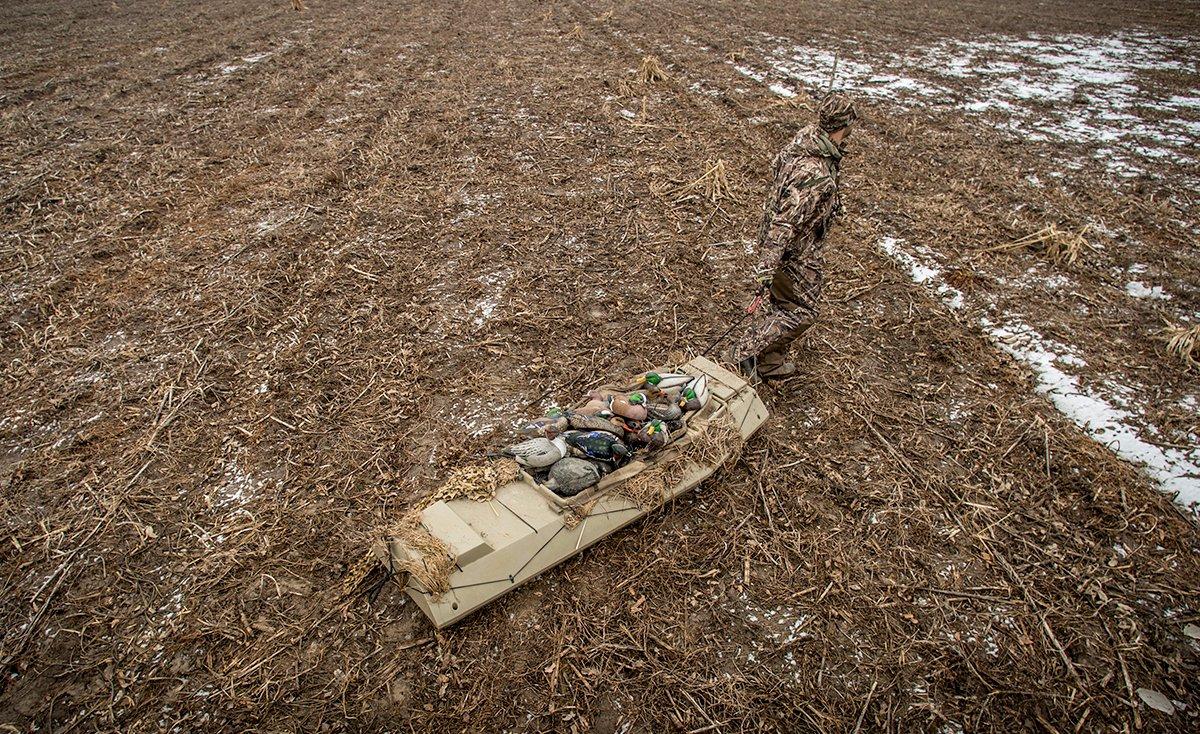Hate Crowds? Try These Secluded Hotspots
Thanksgiving can be a homecoming of sorts. Families reunite, sometimes traveling long distances to return to their childhood homes.
That's what I did this past fall, driving six hours to see my folks. And I had an opportunity to hunt the local millpond where I shot my first duck and did most of my waterfowl hunting in my youth. And although this millpond holds a lot of great memories, one thing that shocked me was the number of blinds I witnessed during my return; actively used hides and old skeletons of blinds rotting away into the marsh.
As a youngster, crowded duck hunting was all I knew. It was common for other hunters to set up downwind of you just minutes before season opened, even though you'd claimed your spot hours earlier.
That's all the hunting I knew as a youngster, but these days, I couldn't find hunting like that enjoyable. If you're in the same boat, here are five places where you can escape the crowds.
Beaver Ponds
A quiet little beaver pond is the perfect place to enjoy the sights and sounds that make duck hunting great. These backwoods gems won't produce birds in great quantities, but they're great spots to bag a couple of wood ducks, mallards and teal. Seek them out by pulling up Google Earth on your computer and tracing a stream's course on the map. Look closely, because these ponds are often just a widening in the stream. If the pond is small enough, you might be able to cover it entirely with your shotgun. In that case, you might not even need decoys, which means you don't have to lug them through the woods or retrieve them. Picking up blocks in beaver ponds can be tricky. Make sure you test the bottom to see if it's firm enough to stand on. Often, it won't be. Even if it is, beaver alleys along the bottom will suddenly drop 2 or 3 feet, so be careful. It's best to bring a dog to retrieve your birds, and leave the decoys at home. Otherwise, bring only four to six decoys, and throw them out on a gang line or jerk string that you can retrieve from shore.
Oxbow Lakes
Google Earth can also help you locate oxbow lakes. OK, to be honest, these might not be actual lakes. They might be ponds just large enough to attract passing waterfowl. Through time, streams change course, eroding bends and straightening their channels. In some cases, these little oxbow ponds form right along their course. With no current and often filled with vegetation as a result, these are perfect loafing and feeding places for mallards. Poke into them while you're jump-shooting a creek, or simply set out a few decoys early in the morning and wait for birds to be shot off nearby wetlands. Ducks aren't used to seeing hunters in these safe areas, and they can provide fantastic in-your-face shooting.
Irrigation Ditches
Irrigation ditches aren't usually thought of as go-to waterfowling destinations, but they can help you escape the crowds and can hold killable ducks when hunting pressure educates local birds. Straight ditches aren't ideal. Although ducks like to sit along straightaways so they can see approaching predators, straight-as-a-string ditches don't usually hold much food or cover. Rather, look for bends in ditches or areas near food. The food sources might be a crop such as corn or perhaps a few oaks dropping acorns into the water. If there's a significant drop down to the water, you can walk along the top of the ditch. If not, you might have to stand back several yards off the ditch as you walk to avoid being seen. Then, walk closer to the ditch periodically to flush birds. Shots are usually close. Bring your canine buddy to retrieve birds that fall across the ditch.
Trout Streams
Like irrigation ditches, trout streams are good locations to jump-shoot birds by wading or paddling a small canoe or skiff. Do your homework while you fish the stream early in the year to find out what kinds of birds use the water. In my experience, during the early part of waterfowl season, I only see fish-devouring mergansers. However, after nearby lakes and marshes freeze, these spring-fed streams will remain open. When they're the only water available, mallards and even buffleheads and goldeneyes will seek them out later in the season.
Deep Lakes
Like trout streams, deep lakes with limited emergent vegetation aren't usually thought of as hallowed ducking grounds. But that can change when everything else freezes. Late in the season, these waters might hold large concentrations of waterfowl for a brief window. They might be here today, gone tomorrow. Rafts of mallards, bluebills and other migrants might stop along these waters briefly, and if you're there on the right day, you can experience some great shooting. Some mallards, as well as the ever-hardy buffleheads and goldeneyes, might linger until those waters freeze. When duck season is still open and that's the only game in town, deep lakes can help you scratch the waterfowling itch.
Click here for more Realtree waterfowling content. And check us out on Facebook.








